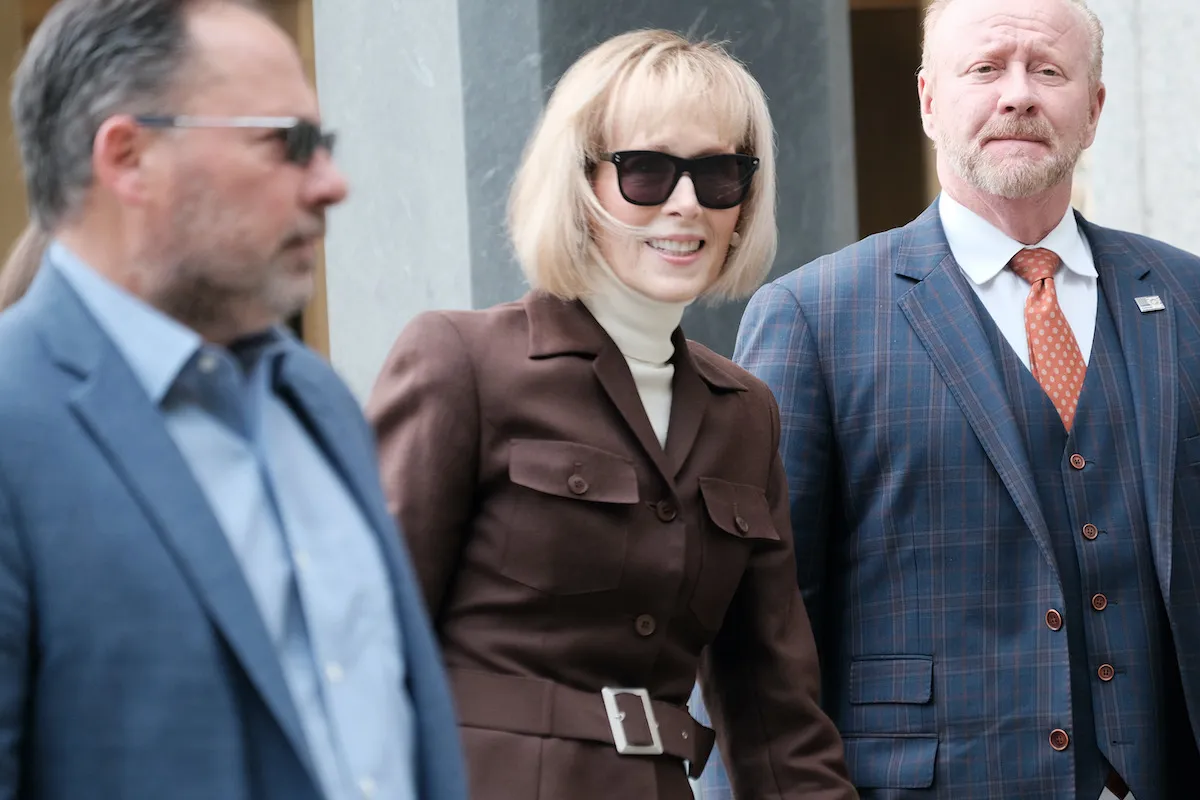A jury found Donald Trump liable for sexual abuse and defamation of E. Jean Carroll and ordered him to pay her $5 million, in what would, in a perfect world, be a potential blow to his presidential campaign and what definitely is a vicarious victory for the legion of women who have accused the former president and other powerful men of similar crimes. But a Washington Post writer thought readers might be interested in a different topic related to the trial: What the victim wore to court.
Rachel Tashjian covers fashion for the Washington Post Style section, so it’s natural for her to focus on people’s wardrobe choices in high-profile situations, but she probably should have known better than to turn her well-trained eye to assess what a victim of sexual assault was wearing. Her piece was a fluffy you-go-girl-flavored commentary about Carroll’s courtroom style, but the blithe proximity to a tired cliche of victim blaming was jarring.
“What was she wearing?” is such a well-known misogynistic tactic for attacking a victim’s credibility that in 2019, Caroll herself flipped it on its head by posing for New York Magazine in the outfit she says she was wearing during the attack. It’s such an exhausted trope that even the most shameless defense attorneys don’t ask it directly. While attempting to undermine Carroll in cross-examination, Trump attorney Joe Tacopina questioned how she was able to fend off her sizeable attacker while teetering on four-inch heels—a not-so-subtle way of pretending he had a legitimate reason to bring up the fact that Carroll is a woman who shops in sexy shoes.
Tashjian’s column did the opposite, drawing a positive connection between Carroll’s clothing choices and her credibility as a witness. But it still drew the connection, perpetuating the idea that what a woman wears is inextricably linked to her character and whether she is trustworthy.
Carroll “is from a generation that knows perhaps better than any other how women use clothes to be taken more seriously,” Tashjian writes. “This is also the generation that introduced us to the modern sheath dress, the pencil skirt and the pussybow blouse—staples of the working woman’s wardrobe developed to armor a generation newly entering the white-collar world. You’re supposed to stay silent, the thinking went, so you better look good doing it.”
Is anyone else simultaneously wistful for ’60s fashion and squicked by the sexism that has proved just as timeless?
Tashjian praises Carroll’s choices as those of someone who obviously spent years writing for a fashion magazine, perhaps rubbing elbows with stylists and designers, with an appreciation for quality and the ability to pair classic pieces with interesting details. But she also calls Carroll a “vision of reliability.” She speculates on what Carroll’s clothing communicated to the jury, about how her clothing helped portray her as believable and relatable, a “conduit for empathy.”
Tashjian is not the only prominent fashion writer to make these observations. The New York Times published a similar piece titled “Carroll, Clothes and Credibility.” “She looked consistent and reliable, day in and day out,” writes Vanessa Friedman. “She did not waver — not in her style or her story.”
It’s hard to argue with the assertion that these things matter. What someone wears affects how others perceive them, and this is undeniably true in courtrooms as jury members carrying their own biases try to gauge the credibility of strangers. Even more so when the stranger is a woman accusing a man of a sex crime.
But it’s also true that these things shouldn’t matter, and fashion writers have the ability to steer the conversation by what they choose to focus on. They might not have created the culture that unfairly scrutinizes what prominent women wear, but they sure are feeding into it.
“You’d have to be a fool to think her clothes weren’t part of the equation in this trial,” Tashjian writes.
Okay, sure. But wouldn’t you also have to be a fool to think commenting on a victim’s fashion choices was a good idea? You’re still looking at a woman’s clothes and suggesting she deserved what she got because of them, even if the thing you’re suggesting she deserved was to be believed.
(featured image: Spencer Platt/Getty Images)










Published: May 10, 2023 05:04 pm